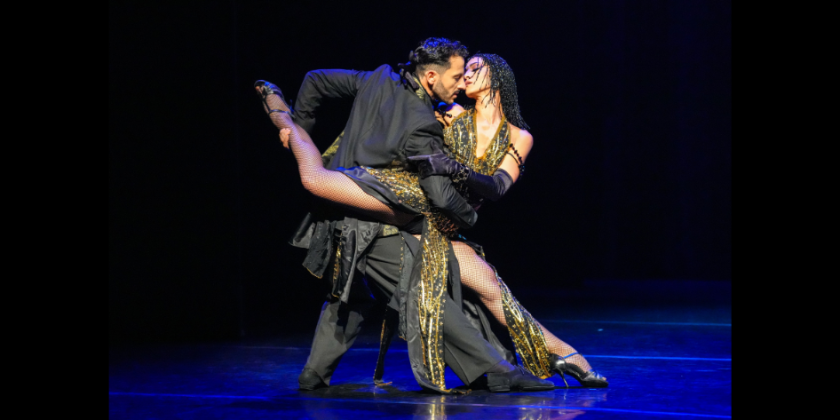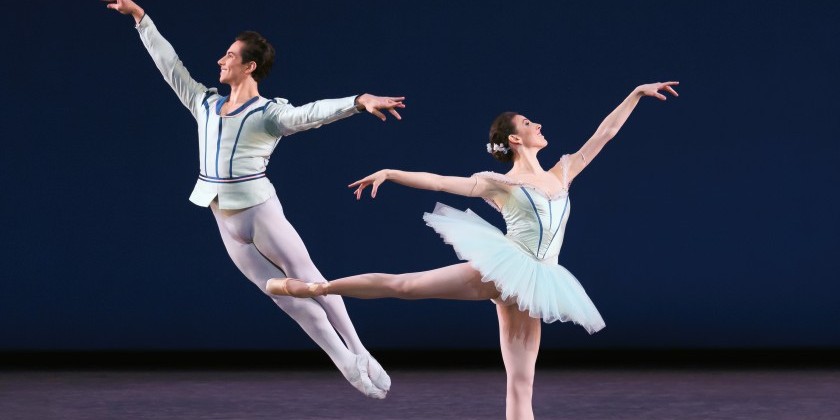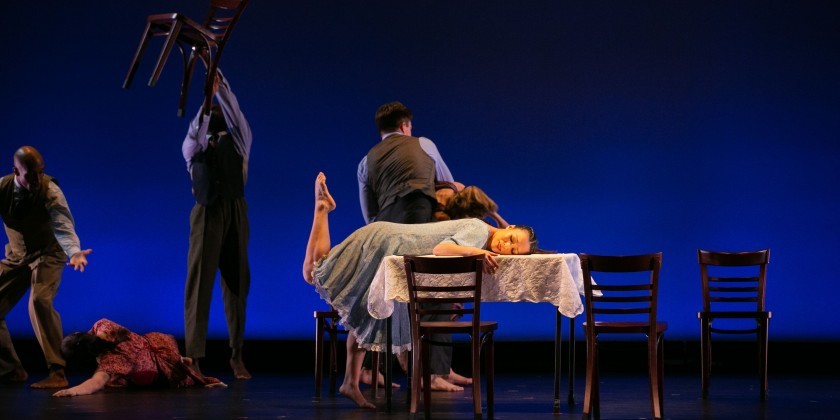IMPRESSIONS: Re-formed London City Ballet’s New York Debut at The Joyce Theater

Artistic Director: Christopher Marney
Choreographers: Ashley Page, Liam Scarlett,
Arielle Smith, Christopher Marney
Repetiteurs: Laura Morera, Ricardo Cervera
Wardrobe Designer/Manager: Emily Noble
Lighting Designer: Andy Murrell
Video Designer: Duncan McLean
Pianist: Luc Xu Cheng
Dancers: Isadora Bless, Jimin Kim, Álvaro Madrigal, Nicholas Mihlar, Cira Robinson, Miranda Silveira, Joseph Taylor, Nicholas Vavrecka, Bárbara Verdasco, Alejandro Virelles, Arthur Wille, Ellie Young
The New York debut of the London City Ballet at The Joyce Theater this fall felt like a red-letter occasion, especially, I suspect, for balletomanes who are avid followers of the British Royals. Disbanded in 1996 (after its almost 20-year existence as a classical-ballet touring troupe supported by Princess Diana’s patronage), the London City Ballet has just been re-formed under the artistic direction of British choreographer Christopher Marney. Fittingly, as Marney explained in a recent New York Times interview, it was upon seeing the original London City Ballet perform in his hometown in Essex when he was 11 years old that Marney decided dance was his calling.

The re-created touring company’s week-long stay at The Joyce marked the conclusion of its inaugural season. And in an affectionate nod to the past, the new 12-member troupe incorporated two short, scrapbook-like films into its four-piece program of ballets by contemporary British dance-makers. The films featured vintage photos and videos of the original troupe, archival images of programs, posters, and reviews, plus precious footage of a delighted Diana watching rehearsals and elegantly displaying her warm commitment to the dancers and their work.
For his fresh iteration of the London City Ballet, Marney has assembled top-flight early-career terps from the U.S., the U.K., Brazil, Canada, Spain, Korea, and Cuba. Endearing performers, they move with a confident command of ballet technique, while softly seasoning their dancing with enchanting emotionality.

Embodying the revived company’s mission to spotlight small, rarely-seen ballets by 20th and 21st-century choreographers, the dancers gave winning interpretation to a program comprising three choreographic hits: Ashley Page’s Larina Waltz (1993); Liam Scarlett’s Consolations & Liebestraum (2009), and Marney’s Eve (2022). The only choreographic misfire was the U.S. premiere of Arielle Smith’s Five Dances (2024), which, nonetheless, made for satisfying viewing, thanks to the dancers’ energetic performances.
It was Scarlett’s name on the roster of choreographers that initially drew me to the show, and his affecting ballet — an episodic depiction of the birth-to-death evolution of a romantic affair — was indeed the highpoint of the evening. Unseen, according to program notes, since its premiere 25 years ago, its Antony Tudor-esque choreography employs telling gestures to expose inner landscapes and uses indicative spatial designs to reveal the ever-changing relationship of a man and woman (played by different dancers at different stages of their love). As the duo’s shared feelings deepen over time, their partner-work grows riskier. We see sudden plunging dips, off-centered postures, daring backward falls, all accompanied by fervent Liszt piano music (played live, with exhilarating passion, by Luc Xu Cheng). But as his love matures, she resists, literally pushing him away, or sometimes succumbing, uncomfortably, to his advances. Ultimately, he leaves. She kneels, returning to the position we found her in at the start of it all, quiet, still, absorbed in her own thoughts. A neatly-told story, it’s a gem of a ballet.
.jpg)
Exquisitely crafted, and also never before seen in the U.S., Page’s welcoming Larina Waltz kicked-off the evening joyfully, tossing out upbeat displays of lively ballet-step sequences. Built of familiar classical vocabulary, and danced to a propulsive Tchaikovsky waltz, the choreography bounces along with a pleasing sense of purpose. Visually, it’s extremely interesting -- because of how constantly and simultaneously it moves both horizontally across the floor and vertically through different levels of space. The choreography always feels like it’s going somewhere, its distinct phrases all leading to edifying, unpredictable endpoints.

Unfortunately, the thrilling agitation of its racing John Adams accompaniment, often made the slower, weighted movements of Five Dances appear tired, emotionally empty, and of little rhythmic interest. And the insertion of black-outs between the ballet’s later sections creates a series of false endings that make the work feel unnecessarily extended. The spirited dancers, however, kept us entertained throughout, with Arthur Wille emerging as the troupe’s stand-out technician. He attacks the space with a sleek, clean-lined ease that captivates.

Closing the program on a note of communal hope — reflecting, perhaps, the revivified troupe’s forward-looking stance — the U.S. premiere of Marney’s Eve offered a refreshing, re-imagining of the Adam and Eve tale. A penetrating narrative work, the ballet re-casts Eve as the story’s central character, places Adam “out of the picture” most of the time, and allows The Serpent (powerfully portrayed by Álvaro Madrigal) to become the driving dramatic force. Madrigal’s shrewdly threatening performance makes this Garden of Eden a scary place. But after the apple-eating episode, the emergence of a fluidly-moving, tableaux-forming ensemble of new beings evokes a dreamy world of early humanity that suggests everything will turn out okay, in time.













